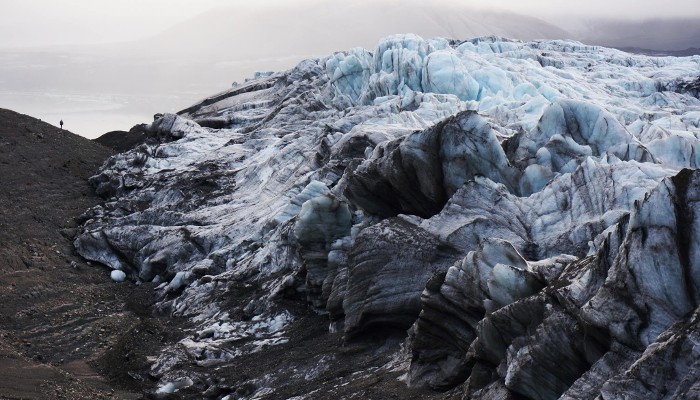
Surge-type glaciers are the bi-polar member of the family of glacier dynamics. Every now and then they go into a complete fury and nobody really understands why.
What are surge-type glaciers?
Surge-type glaciers typically go through what we call the “surge cycle”. It is divided into two phases; a long quiescent phase during which the glacier is more or less dormant, followed by much shorter phase called “the surge”. Glacier velocities during the surge can typically reach 100 to 1000 the quiescence velocities. Velocities of up to 40 m per day were measured in Alaska during the surge of Variegated glacier.
The duration of the surge cycle varies from region to region. It tends to average around 20 years in Alaska, and 100 years or more in the Arctic.
What really triggers the surge of glaciers has always been an enigma in glaciology. Their unpredictable behaviour, and the dramatic and dangerous nature of the surge phase have always prevented extensive fieldwork to collect much needed in-situ data. Only a handful of studies have managed to obtain field data on glaciers before, during and after the surge of a glacier.
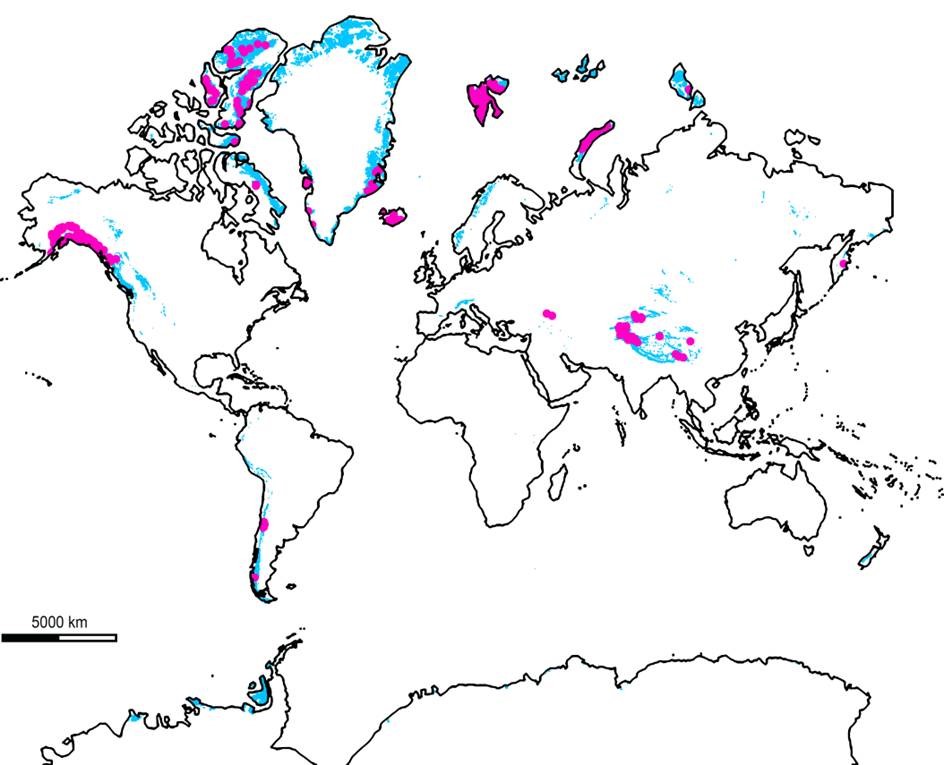
Distribution of surge-type glaciers in the world. Normal glaciers are blue, surge-type glaciers are represented by pink dots (credits: Sevestre and Benn, submitted)
Where are they found?
Surge-type glaciers are distributed in a “non-random” fashion, meaning that they do not uniformly pepper all the glacierized regions on Earth, but contrarily gather in narrow clusters only found in some regions. We think that cracking the code of their distribution might lead us to a better understanding of the causes of surging.
A strong concentration of surge-type glaciers can be found in the sub- and high-Arctic, namely Alaska, Arctic Canada, Greenland, Iceland, Svalbard, Novaya Zemlya and Karakoram. Another popular area for these glaciers is western central Asia with the Karakoram, Tian Shan and Pamirs. Sporadic clusters of a few individuals have also been identified in the Andes, Caucasus and Kamchatka (See Fig. 1).
Our contribution to the question:
A large part of our work has consisted in building a global inventory of all observed/identified surge-type glaciers in the world. This has enabled us to perform the first global statistical analyses on these glaciers. Comparing the geometry and climatic distribution between normal and surge-type glaciers has yield very interesting results.
Fieldwork has also been an essential component of our work. As a group fully based in Svalbard, we have no excuses not to do get out in the field and collect top quality data. Svalbard is actually of huge interest for us as the population of identified surge-type glaciers represent 20% of all the glaciers on the archipelago.
By using a Ground Penetrating Radar (GPR) we have been able to look at glacier thickness and ice temperature on 15 different surge-type glaciers. These attributes are essential to map the thermal structure of the glaciers and understand further their potential surge mechanisms. As extensive as this may sounds, GPR-ing glaciers in Svalbard is actually quite an enjoyable task to do as the whole system can be towed by a snow scooter, and hundreds of kilometres of data can be collected in just a couple of days (see figure 2).
An “all seeing eye” is our best ally to observe spatial patterns of surging on the archipelago. Remote sensing data is really the only way we can catch surges in their very early stages. At the end of last year, we acquired pairs of TerraSar-X images covering most of the archipelago, and derived surface velocities from there. We discovered that no less than 17 glaciers are currently actively surging!
So… why do they surge?
First, we know how glaciers can surge. They can sustain such high velocities over months or years by having water at their base, lubricating their movement. But as soon as the water escapes, the surge terminates.
Over the past decades, two models of surging have been developed, each trying to understand how glaciers with different thermal structures can surge. Glaciers can either be “warm bedded” meaning that ice at their base is just at the point of melting; or “cold-bedded” if their ice is below the point of melting. Glaciers with a fully warm base have been observed to surge, as well as glaciers with a warm core surrounded by cold ice. The first model suppose that a switch in the configuration of the basal meltwater drainage system could lead to a surge, while the second suggests that surging could be caused by a change in the basal temperature from cold to warm. In both models, water eventually becomes trapped under the glacier, removing any friction at its base, and enabling it so move at high speeds.
There is still a lot to understand about these glaciers, and we hope that our results will cast a new light on the weird and wonderful world of surging glaciers!
Time lapse imagery
Follow this link to see a time lapse of the surge of Paulabreen, Svalbard:
http://www.polarresearch.net/index.php/polar/rt/suppFiles/11106/0
Heidi Sevestre is a PhD student based at the University Centre in Svalbard and supervised by Prof. Doug Benn and Prof. Jon Ove Hagen. Heidi is interested in glacier dynamics, particularly the mechanisms of glacier surges. She studies the global distribution of surging glaciers and their regional specificities, while field data is collected in Svalbard.
Heidi tweets as @HeidiSevestre.

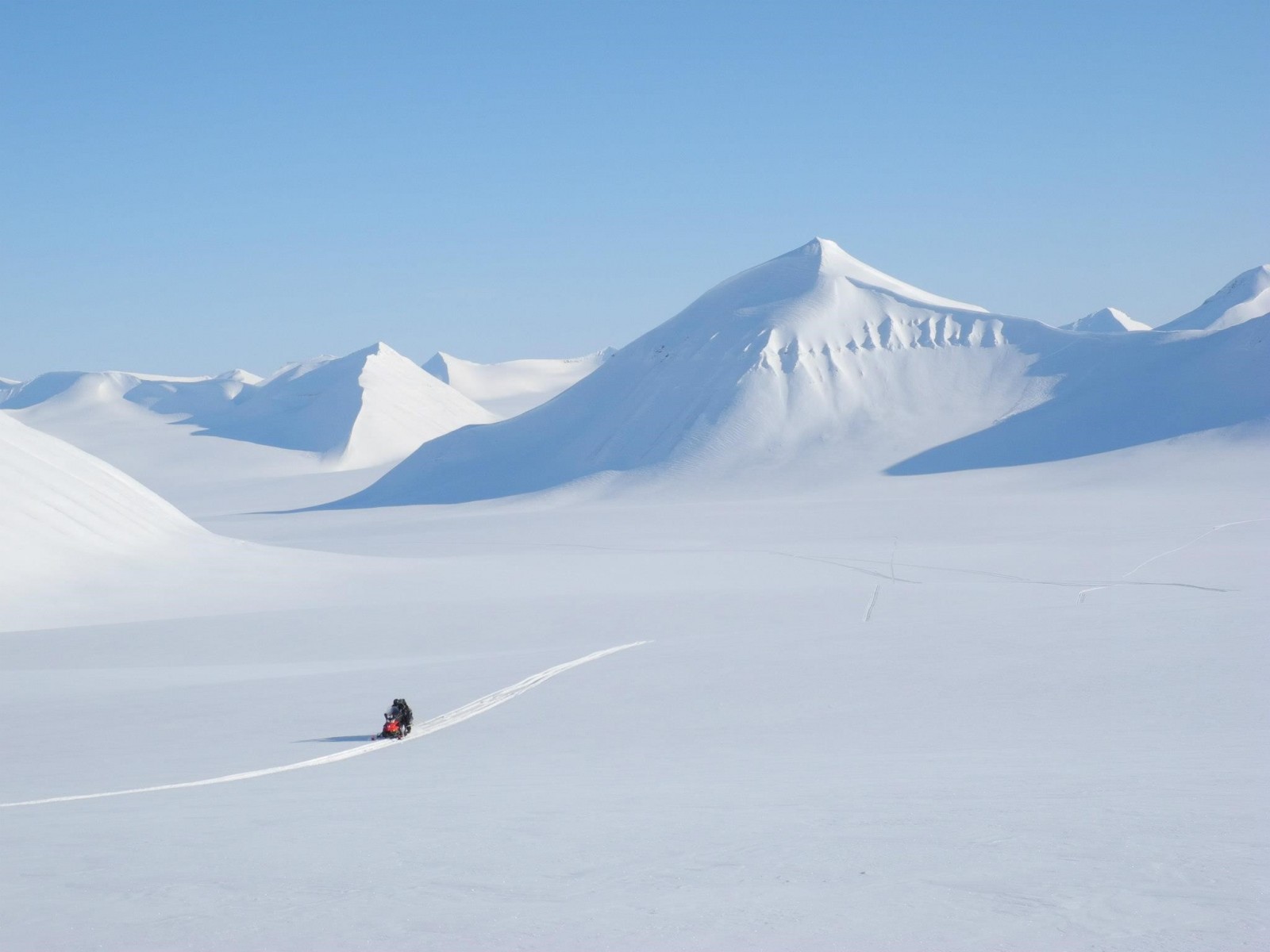

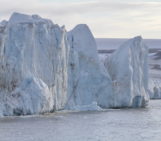
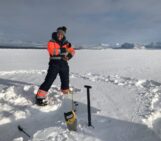
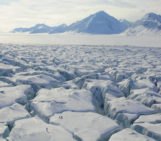
Pingback: Cryospheric Sciences | Did you know… the Andes are so cryo-diverse?
Pingback: Cryospheric Sciences | The Norwegian Polar Institute